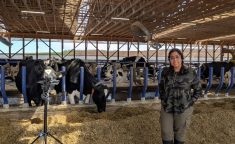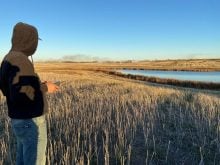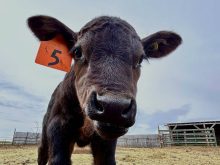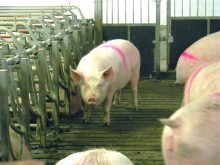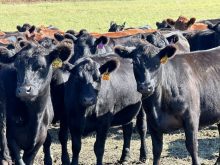A Neepawa family has partnered with the Nature Conservancy of Canada to safeguard an ecologically significant piece of grassland.
The site, designated as the Langford Escarpment, is 15 kilometres southeast of the town in northwestern Manitoba and is now protected to preserve its endangered ecosystem, the NCC has said.
Why it matters: Grasslands have been noted for their role in preserving biodiversity on the Prairies.
Read Also

Why agriculture is Canada’s energy ace
Why isn’t agriculture getting more play in Canada’s quest for efficient, renewable energy production? It should be
The 178-hectare parcel has been a cornerstone of the Harper family’s history since the early 1900s.
“That the property is donated and conserved for the benefit of nature seems the most fitting way to honour my family and the land,” said family member Judith Harper, in a Nov. 19 press release.
The Harper family donated 25 per cent of the property’s value to the NCC. Additional funding for the purchase came from the Canadian government through the Natural Heritage Conservation Program, part of Canada’s Nature Fund.
Steven Guilbeault, federal minister for environment and climate change, lauded the Neepawa-area family for the deal. Their values reflect Manitoban appreciation for the beauty and value of the Prairies, he said, adding that the province’s grasslands “play a critical role in the recovery of species at risk.”
“These investments are part of our national conservation campaign to protect 30 per cent of land and water in Canada by 2030. Protecting the natural environment in Manitoba reflects our whole-of-society approach to meet our conservation goals.”
The Langford Escarpment conservation project is part of the NCC’s Prairie Grasslands Action Plan. The national strategy seeks to conserve more than 500,000 hectares of grasslands by 2030. That plan was launched in June 2023.
“Grasslands are the most endangered ecosystem in Canada,” Jeremy Hogan, NCC director of prairie grassland conservation, said at the time. “There’s only 18 per cent left across the three Prairie provinces so it’s a very important campaign that we’re embarking on to make sure that what is left is protected.”
The program initially highlighted projects in all three Prairie provinces. In Manitoba, they included a 455-hectare conservation easement deal near Wawanesa, which represented the largest such easement deal in the province.
“We at the NCC are very lucky that there are numerous families that enjoy and want to preserve the legacy of grazing … (by) financially donating a portion of that property to help us,” Josh Dillabough, natural area manager with the NCC, recently told the Co-operator.
While the grasslands are protected, the land base of the newest deal will still contribute to agriculture.
The Langford Escarpment project will maintain ties to the Langford Community Pasture, and the NCC plans to collaborate with local livestock producers to continue grazing practices that mimic natural disturbances. The environmental group says that will ensure the grasslands thrive and the species that depend on them continue to find habitat.
Saving grasslands requires collaboration with producers for the betterment of nature, culture and the economy, Dillabough said.
“Families like the Harpers, and partners like the Association of Manitoba Community Pastures, are just a few of the people responsible for the existence of grasslands in Manitoba today. We are honoured to be a part of this story and look forward to continuing to move forward for a better tomorrow.
“We understand it’s a working landscape, and people have to be able to make a living on it.”
Barry Ross, general manager of the pastures association, agreed that land conservation is an important goal for the Langford Community Pasture.
“We’d like to thank the Harper family and the NCC for their foresight in conserving this important working landscape and look forward to continuing to work together.”
While primarily grassland, the property also spans ecosystems from oak savannas, aspen and oak forests, creeks and basin wetlands. Those habitats support wildlife ranging from moose, elk and black bears to ruffed and sharp-tailed grouse, wood ducks, blue-winged teals and red-tailed hawks. The site also provides refuge for at-risk species, including the golden-winged warbler, red-headed woodpecker, common nighthawk and eastern wood-pewee.





